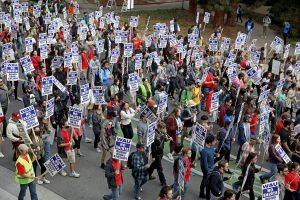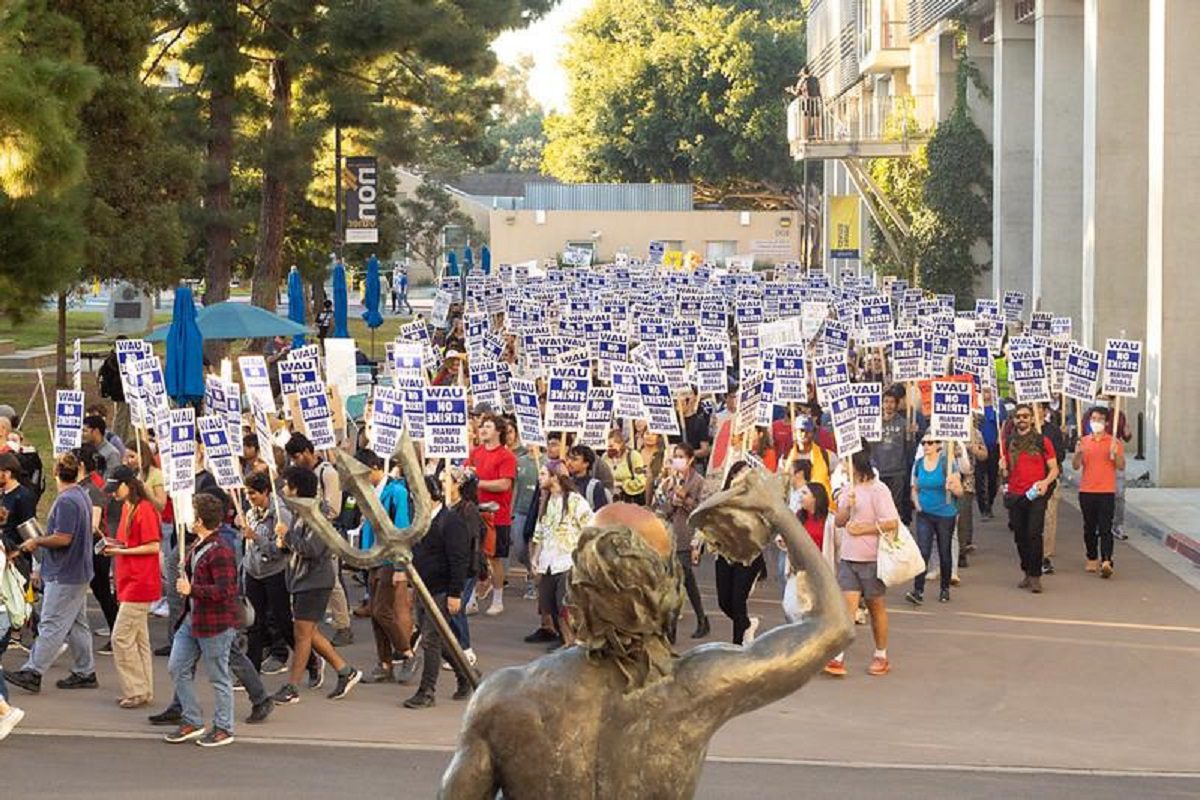Labor Unrest Surge: In New York, The wave of labor unrest is sweeping through a wide range of businesses, from UPS drivers to actors and writers in Hollywood. Why are there so many protests right now? The big changes in workers’ jobs as companies change to meet customer demands for speed and ease of use in areas that have been changed by technology.
The COVID-19 pandemic sped up these changes, pushing retailers online and making the streaming business more competitive. Now, from picket lines, workers are talking about what it’s really like to make binge-worthy shows and send goods to your door.
Overworked and underpaid: Labor Struggles as Demand from Customers Grows
When there aren’t enough workers and buyer demand goes up, employees say they are overworked and not paid enough. Starbucks baristas, airplane pilots, and delivery drivers have to work extra hours, and the companies rely on part-time, temporary, or lower-paid workers.
Screenwriters and actors in Hollywood join the chant and hold their first strikes at the same time in 40 years. Streaming has changed how the entertainment business works by cutting pay and pushing showrunners to make content faster with smaller teams.
The effects on Hollywood writers and actors of streaming vs. residuals
The rise of streaming has changed the traditional residuals method, which used to pay screenwriters and actors for reruns and airings over a long period of time. Streaming services, unlike standard TV, don’t have easy metrics like box office returns or ratings. This means that writers get small residuals, and sometimes only checks with a single digit.
Adam Shapiro, who is known for Netflix’s “Never Have I Ever,” talks about how sustainable pay models are needed now that streaming is the future of the entertainment business.


READ MORE: Cardi B: Fiery Onstage Retaliation The Rapper Strikes Back Amid Shocking Concert Attack
The rise of “mini rooms” and the struggle to find work that can be done for a long time
“Mini rooms” in pre-production, where writers work briefly on shows that might not get picked up, add to the industry’s labor problems. Screenwriters are under more pressure because Netflix won’t keep strong writing teams together during pre-production.
The fight for fair treatment is something that writers and UPS drivers can agree on. UPS stopped a devastating strike by the Teamsters by stopping forced overtime and giving full-time jobs to lower-paid drivers.
After the UPS contract, labor unrest is getting stronger.
The Worker Institute’s study says that there will be 52% more labor strikes in 2022, and there are no signs that labor protests will slow down. Labor activists hope that the UPS deal will set a standard that will make companies raise their standards for workers. Convenience for consumers is becoming less important in a world where workers want to be recognized and treated fairly.
Also Read: Women World Cup: US Faces Portugal in High-Stakes Clash at Auckland
Our Reader’s Queries
How many labor strikes in 2023?
Nearly 400 strikes were carried out by over half a million workers in the first 11 months of 2023, as reported by Cornell University’s Labor Action Tracker. Johnnie Kallas, the tracker’s project director, believes this surge in strikes is significant in comparison to previous years in the 21st century.
What led to labor unrest?
As industrialization sped up, and a small group of people collected most of the money, certain workers started to come together and support forming unions. The workers were looking for additional rules to keep them safe, improved pay, shorter work days, and the right to speak out and gather together.
What was the biggest strike in 2023?
160,000 actors from SAG-AFTRA initiated the year’s most significant strike in July, joining forces with 11,000 Screenwriters (WGA) on the picket line. Hollywood ground to a halt as well-known personalities made appearances in TV news coverage from the strike. The strike lasted for a period of four months.
What was the largest labor strike in US history?
The Steel Strike of 1959 holds the title for the biggest strike in U.S. history. It went on for 116 days from July to November and drew in around 500,000 workers and members of the United Steelworks of America union. The primary bone of contention was the disagreement over wages and alterations to workplace regulations.

